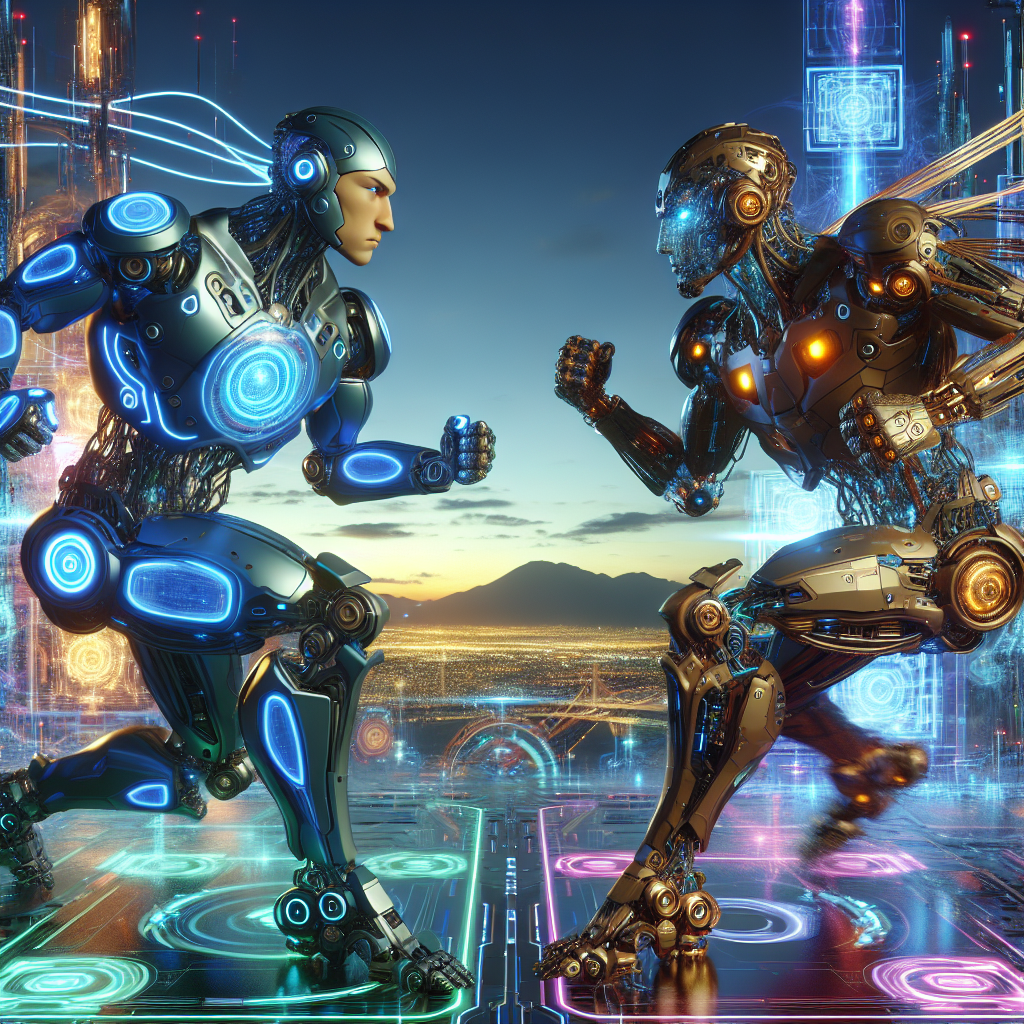Anthropics Innovation vs. OpenAI's Conservatism: The AI Race Intensifies
Introduction
The rapid advancements in artificial intelligence (AI) technology have set the stage for a fierce competition among industry giants. OpenAI and Anthropic AI are currently at the forefront of this race, each pushing the boundaries of what AI can achieve. However, recent developments reveal a stark contrast in their approaches, sparking concerns and excitement in the tech community.
OpenAI: Sleeping at the Wheel?
OpenAI has been a pioneer in the AI landscape, introducing groundbreaking technologies like GPT-3 and DALL-E. However, the company's recent actions, or rather inactions, have left many in the tech world scratching their heads. One of the major points of contention is the much-anticipated Sora video generator, announced with great fanfare earlier this year. Despite the hype, there's been little to no word about artists or creatives getting access to this tool. Instead, it seems that companies like Toys R Us and Motorola have exclusive rights to utilize Sora for commercial advertisements.
This approach diverges significantly from OpenAI's earlier days when tools like DALL-E were made accessible to creatives for testing and experimentation. The shift towards corporate exclusivity raises questions about OpenAI's commitment to democratizing AI technology. The lack of accessible advancements is alarming, especially when considering the competition's rapid strides.
The Delay of GPT-5
Adding to the concern is the delay of GPT-5, which many expected to see this year. While OpenAI never officially promised a 2024 release, speculation was fueled by the company's own CTO hinting at "PhD level artificial intelligence" in the near future. However, recent statements suggest that if GPT-5 represents the next echelon of AI, it's unlikely to debut this year. This delay is particularly disheartening given the swift advancements made by competitors like Anthropic AI with their latest models, such as Claude 3.5 Sonet.
Anthropic AI: The Agile Innovator
Anthropic AI is emerging as a formidable competitor, demonstrating a keen ability to innovate and iterate rapidly. Their latest model, Claude 3.5 Sonet, offers features that not only rival but in some cases surpass those of OpenAI's GPT-4 Omni. One of the standout features of Claude 3.5 Sonet is the introduction of "artifacts," a novel concept that allows users to create, remix, and share small applications or "workstations" powered by AI.
The artifacts enable users to code, generate prompts, create test variables, and even develop simple games or tools within a shared, collaborative environment. This capability is unique to Anthropic and represents a significant leap in making AI more accessible and versatile. For instance, users can create a basic physics sandbox or even a themed decoration game, showcasing the playful yet powerful potential of these artifacts.
Claude's Developer Console: A Game Changer
In addition to artifacts, Anthropic has introduced substantial updates to their developer console, enhancing its usability and functionality. The new "evaluate" tab allows developers to automatically create test cases, stress test their prompts, and compare outputs side by side. This feature is particularly beneficial for developers looking to fine-tune their applications with precision and efficiency.
The developer console also supports the creation of variables that can be manually adjusted or generated automatically, adding a layer of complexity and customization to AI interactions. This versatility extends beyond basic user interactions, enabling the development of more sophisticated and practical tools. The ease of use and robust features of Anthropic's developer console set it apart from OpenAI's more static offerings.
The Future of AI: Democratization vs. Corporatization
The current trajectory of OpenAI and Anthropic AI highlights a broader debate in the AI community: the democratization of AI technology versus its corporatization. OpenAI’s recent leanings towards commercial partnerships at the expense of broader accessibility contrast sharply with Anthropic's open, community-driven approach. This divide raises important questions about the future of AI and who stands to benefit most from these advancements.
Anthropic’s strategy of making advanced AI tools accessible to developers and laypeople alike fosters a collaborative and innovative environment. By allowing users to share and remix artifacts, Anthropic encourages a culture of open-source development and continuous improvement, reminiscent of the early days of the internet.
Conclusion
The race between OpenAI and Anthropic AI is far from over, with each company’s approach reflecting different philosophies on the role of AI in society. While OpenAI's recent actions have raised concerns about accessibility and innovation, Anthropic AI's rapid advancements and user-friendly tools showcase a promising alternative. As the AI landscape continues to evolve, it will be crucial to monitor these developments and advocate for a future where AI benefits are broadly shared.
For more detailed background on these topics, visit Anthropic AI and OpenAI.
The competition between OpenAI and Anthropic AI is not just a technical rivalry but a philosophical one, with significant implications for the future of artificial intelligence. As AI continues to integrate into every facet of our lives, the need for transparency, accessibility, and ethical considerations will only grow. Whether through OpenAI's corporate alliances or Anthropic's community-driven innovations, the AI community must navigate these challenges thoughtfully to ensure that AI serves the greater good.
Related News
- The Evolution of AI: Claude 3.5 Sonet's Reign and OpenAI's Struggles
- The Evolution of AI: Insights into OpenAI's 03 Mini and the Competitive Landscape
- The Dynamic Landscape of AI: Drama, Innovations, and Speculations
- Navigating the AI Tsunami: A Deep Dive into the Currents Shaping Our Digital Future
- Diving Deep into the Latest AI Whirlwind: An Analysis That's Both Electric and Enlightening
